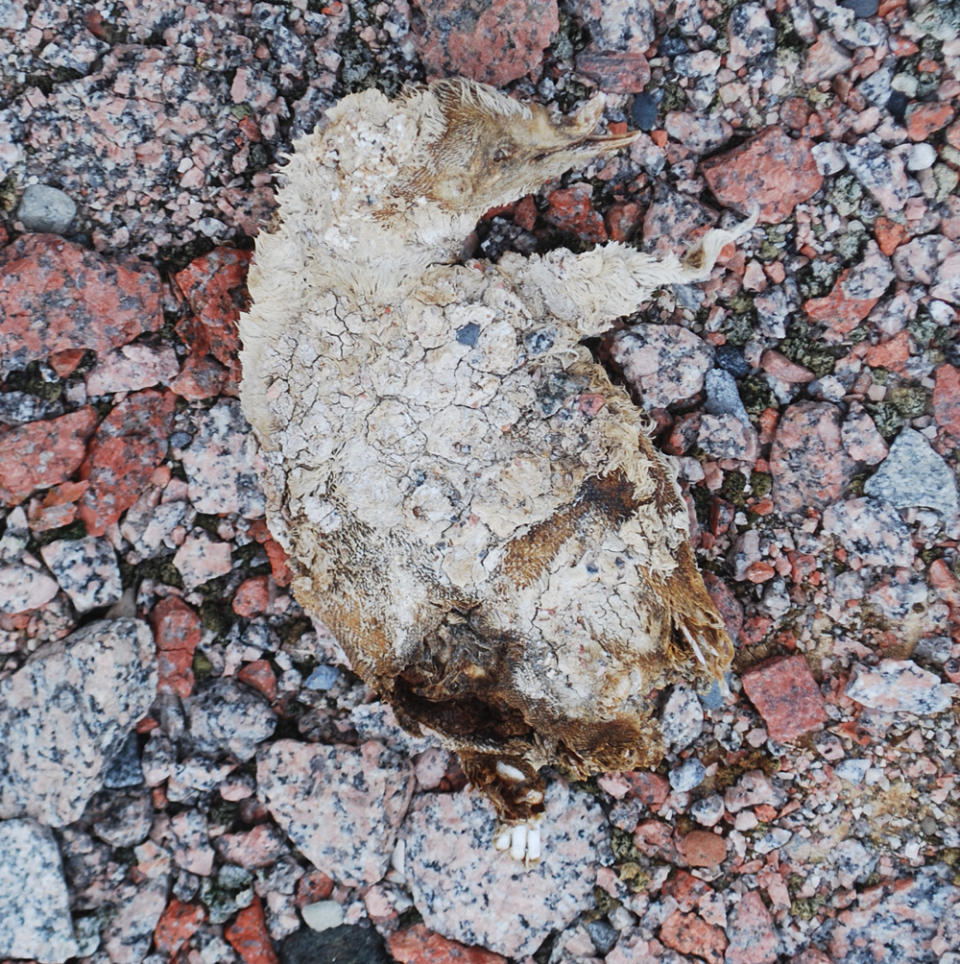Climate crisis: 5,000-year-old penguin graveyard revealed by retreating Antarctic ice

In January 2016, Professor Steven Emslie of the University of North Carolina Wilmington made an unexpected discovery in Antarctica. On a rocky outcrop on the Scott Coast, he found the remains of what appeared to be both newly dead penguins alongside mummified older remains.
The bodies were mostly of Adelie penguins chicks, which have a high mortality rate. Even more puzzling were fresh excrement stains on the ice, despite there being no record of a penguin colony being established here - even going back to when the first explorers, led by Robert Falcon Scott, who came to the Ross Sea between1901 and1903.
Ernest Shackleton, who arrived in the same region on his 1907–1909 expedition, also made no mention of an Adelie penguin colony in the area.
But Professor Emslie found large numbers of bones and feathers alongside what he described as “fresh” remains of birds. Further investigation of the site revealed small mounds of pebbles, which Adelie penguins use for nesting.
Professor Emslie said: “We excavated into three of these mounds, using methods similar to archaeologists, to recover preserved tissues of penguin bone, feather, and eggshell, as well as hard parts of prey from the guano (fish bones, otoliths). The soil was very dry and dusty, just as I've found at other very old sites I've worked on in the Ross Sea, and also had abundant penguin remains in them.
“Overall, our sampling recovered a mixture of old and what appeared to be recent penguin remains implying multiple periods of occupation and abandonment of this cape over thousands of years. In all the years I have been doing this research in Antarctica, I've never seen a site quite like this.”

The remains of the birds were sampled for radiocarbon analysis, with the results indicating the “fresh” remains are actually ancient, and had been perfectly preserved by the ice and snow for at least 800 years, until melting caused by the rapidly warming climate revealed the colony recently.
However, the radio-carbon dating revealed three sites in the area had been used over three different epochs, with the earliest penguin colony occupying the rocky outcrop around 5,000 years ago.
Professor Emslie reported the first occupation period lasted from 5,135 to 2,750 years ago. A second stint is evident with “surface remains” from 2,340 to 1,375 years ago, and a third and final occupation is indicated by dates on the two surface mummies and subsurface excrement, or guano, from 1100 to 800 years ago.
When the last occupation ended, possibly due to increased snow cover over the cape as the Little Ice Age began, the fresh remains on the surface were covered in snow and ice and preserved intact until recent exposure from snowmelt.
Global warming has increased the annual temperature in the Ross Sea by 1.5 to 2C since the 1980s, and satellite imagery over the past decade has shown the cape gradually emerging from under the snow.
Therefore, Professor Emslie said, “this recent snowmelt revealing long-preserved remains that were frozen and buried until now is the best explanation for the jumble of penguin remains of different ages that we found there.”
The paper suggested further finds could come to light as the snow and ice retreat.
“As warming trends continue in Antarctica and the Ross Sea, additional snow and ice-covered sites may become evident and add to the dynamic record of penguin occupation and abandonment over millennia with climate change," he added.
The research is published in the journal Geology.

